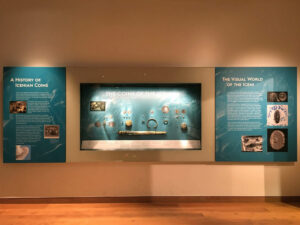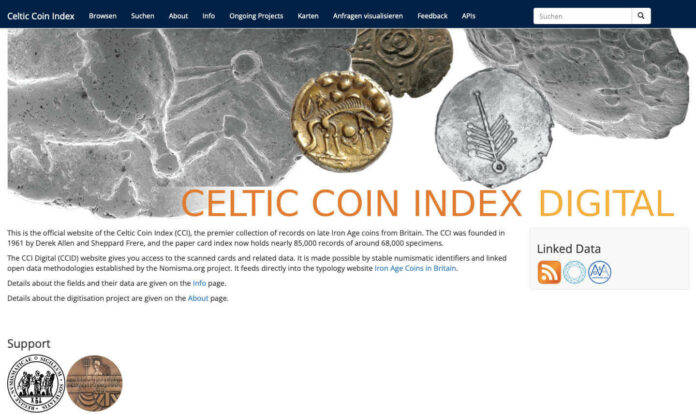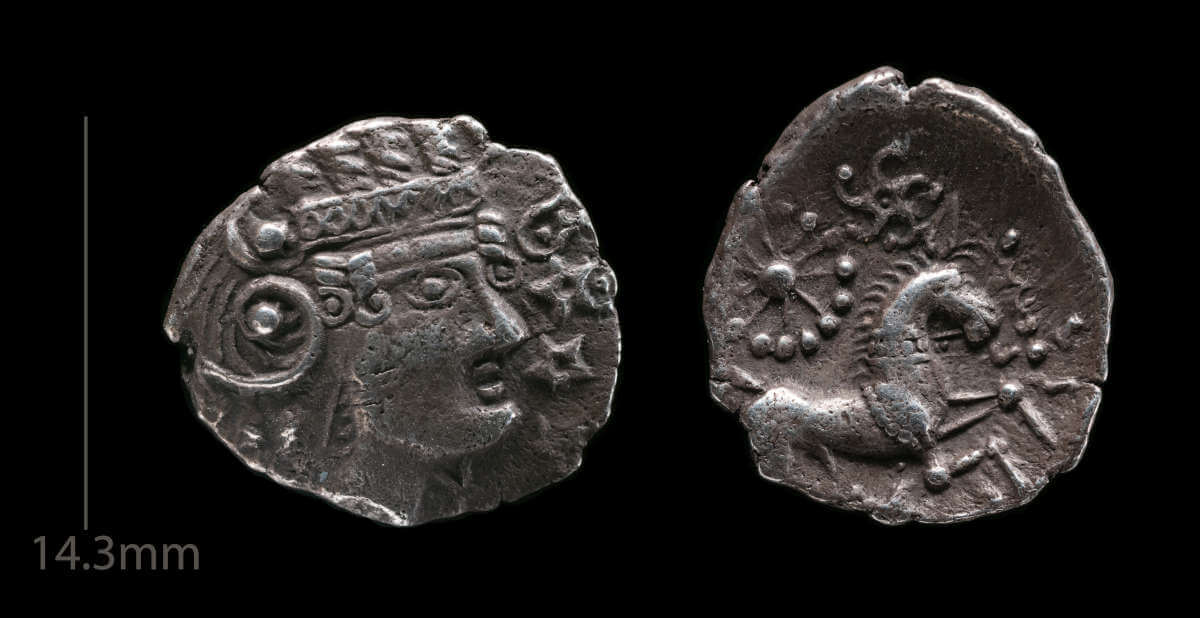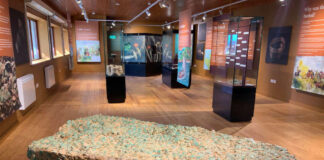Through the acquisition of the John Talbot collection, the number of Celtic coins at the Ashmolean has doubled. Highlights of the collection are currently on display in the Ashmolean Money Gallery. Additionally, the Oxford numismatists now launch the Celtic Coin Index Digital website providing access to the world’s largest dataset of Iron Age coins in Britain.

1000 Icenian Coins from the Collection of Dr John Talbot
The Ashmolean has acquired 1085 Late Iron Age coins, accepted by HM Government under the Cultural Gifts Scheme from collector and scholar Dr John Talbot. The collection includes ornately designed gold and silver coins minted between c. 100 BCE–50 CE by the Iceni community in East Anglia, the tribe of famous “queen”, Boadicea (Boudica). They comprise a rich resource for the understanding of the Iceni and a fascinating period of British history. The acquisition has been made during the centenary year of the Ashmolean’s coin department, the Heberden Coin Room.
Professor Chris Howgego, Keeper of the Heberden Coin Room, says: “Over the past 100 years, the Ashmolean’s Coin Room has become one of the world’s leading collections and an internationally renowned centre for teaching and research in numismatics and monetary history. Thanks to Arts Council England’s Cultural Gifts Scheme and the generosity of Dr John Talbot, this gift adds an extraordinary new resource for the study of Late Iron Age Britain and Iceni culture. The coins promise to reveal new details about early British history for future historians and museum visitors.”
The Iceni lived in northern East Anglia. We do not know how they identified themselves but Julius Caesar, in his account of expeditions in Britain, called them the Cenimagni; while Tacitus later gave them the name we use today. The best known Iceni individual is “queen” Boadicea who led a spectacular and violent uprising against the occupying Roman forces in 60/61 CE. With their detailed imagery, Icenian coins contain a wealth of information about the Iceni and Late Iron Age life in Britain – from economic structures to political changes to broader culture. Individually, the coins are miniature works of art, with intricate depictions of animals, human heads and a typical Iron Age visual trope – hidden faces which are revealed by rotating the coin.
This major gift has doubled the number of Celtic coins at the Ashmolean. John Talbot is a leading scholar on British Iron Age numismatics. His collection, assembled over 20 years, includes every known type of Icenian coin, and in many cases the finest known example. The Talbot collection will be published on the Heberden Coin Room’s website, which will link them to the recently launched Iron Age Coins in Britain and Celtic Coin Index Digital websites. These will connect the Ashmolean’s collections with others across globe via Linked Open Data, providing a comprehensive resource for scholars and members of the public around the world.
Arts Minister Lord Parkinson says: “The Cultural Gift Scheme exists so outstanding collections such as these Iron Age coins can be displayed for people to see, learn from and enjoy. I thank Dr John Talbot for his generosity and look forward to seeing this fascinating new resource in the Ashmolean Museum.”
Edward Harley OBE, Chairman of the AIL Panel says: “The Talbot Collection of Iceni coins is extraordinary for its size and comprehensive coverage, comprising 1085 coins. This generous gift is made by Dr Talbot, a leading authority in the field of Iron Age numismatics, and so it is no surprise that the collection contains coins of exceptional beauty, quality, and rarity. I hope that this example will encourage others to donate Cultural Gifts and continue to support our national collections.”
Highlights of the Talbot collection are now in the Ashmolean Money Gallery (lower-ground floor) in the special display, “From Julius Caesar to Boadicea – a century of Icenian coins” (until 2 October 2022).
Launch of Celtic Coin Index Digital
The School of Archaeology, University of Oxford, announced the launch of the website Celtic Coin Index Digital (CCID). The CCID is an online archive that provides access to the world’s largest dataset of Iron Age coins in Britain: the Celtic Coin Index (CCI). The CCI has been housed in the Institute of Archaeology at Oxford since 1964. The paper card index now holds nearly 85,000 records of c. 68,000 specimens of Iron Age coins – these cards and some of their related images and data are now available on the CCID website.
Iron Age coins were produced and used from around the early to mid-2nd century BC through the 1st century AD. They provide the first written evidence from Britain and mark the end of its “prehistory”. These coins are mainly found in southern and eastern England and are a major source of information on society, trade, religious beliefs, and continental contacts, forming a crucial part of the archaeological record for Iron Age Britain.
The CCID uses stable numismatic identifiers and linked open data methodologies established by the Nomisma.org project, which enables this digital collection to be linked to other coin databases across the globe through the related website Iron Age Coins in Britain (IACB). The digital version of the CCID will be useful for a range of interests, from finds identification to academic research.
The project to digitise CCI and create the CCID using the Numishare platform and Nomisma.org ontology was undertaken by a team at the University of Oxford, supported financially by the Royal Numismatic Society, the British Numismatic Society, the University of Oxford Barclay Head Fund, and private donors. The team includes:
- Dr Courtney Nimura (Institute of Archaeology),
- Professor Chris Howgego (Ashmolean Museum of Art & Archaeology),
- Professor Chris Gosden (Institute of Archaeology),
- Dr John Talbot (Celtic Coin Index),
- Molly Masterson (School of Archaeology).
Ethan Gruber (American Numismatic Society) created the website and the necessary Nomisma concepts for the project. Our advisory group includes:
- Dr Philip de Jersey (Guernsey Museum & Art Gallery),
- Dr Eleanor Ghey (British Museum),
- Dr Ian Leins (English Heritage),
- Dr David Wigg-Wolf (Römisch-Germanische Kommission des Deutschen Archäologischen Instituts).
To read more about the display and to plan your visit, go to the Ashmolean Museum website.
In 2017 John Talbot published the book “Made for Trade – A new view on Icenian coinage”.
Here you can directly access the Celtic Coin Index Digital (CCID).
View the CCID Public Engagement website.
Visit also the Iron Age Coins in Britain (IACB) database.







